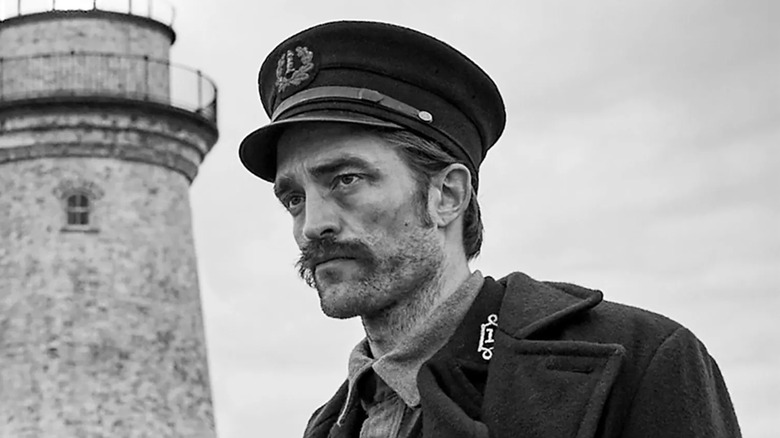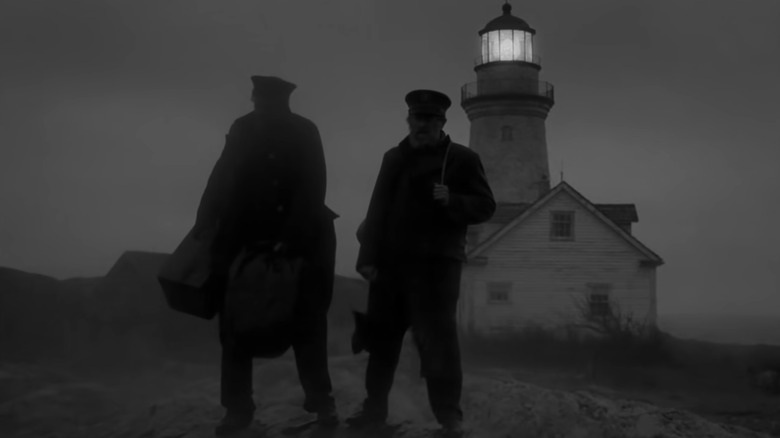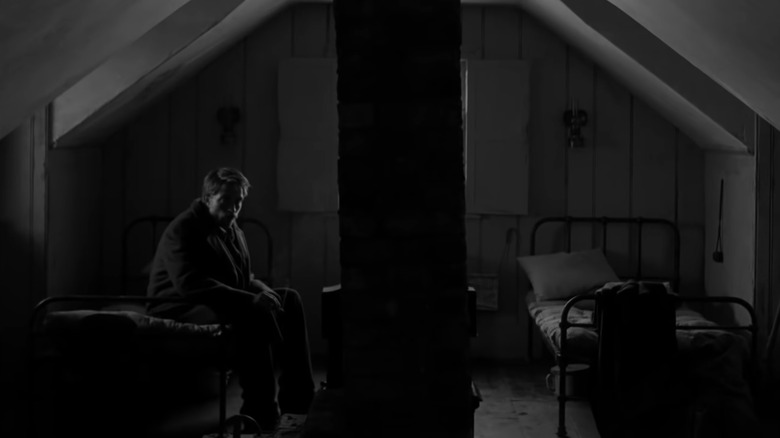Robert Eggers Didn't Cut Any Corners Creating The Lighthouse's Set
I love movie sets. For films that can afford to do so, building a set unique to the movie being made gives the picture a look all its own. You can design something to make specific images and set pieces you have devised in your mind, rather than adapting your vision to the one location you are able to get for a particular day. Sets offer filmmakers the most control and latitude to make what they want come to life.
Robert Eggers is a director who goes above and beyond when it comes to historical accuracy and an attention to detail. All three of his feature films thus far burst at the seams with exquisite design details from every single department to bring his worlds to life. For Eggers, the worlds he is interested in don't exist anymore. He hasn't made a movie set in the 21st Century. Or even one in the 20th Century for that matter. Eggers buries himself in research of the past and wants to best recreate the environment of the time.
So, for "The Lighthouse," this meant having a titular location that could have plausibly existed in the late 19th Century, and while scouting the northeast of North America, the crew could not find one they were looking for. So ... they had to build their own 1890s lighthouse. Not only did this have to be a historically accurate lighthouse, it had to be one that allowed Robert Eggers to best utilize the black and white film he was working with, as well as the highly unusual 1.19:1 aspect ratio.
No fun in C.G.
The initial plan for "The Lighthouse" was not to build a lighthouse. Creating an entire lighthouse from scratch is costly, and the film only had a reported budget of $11 million, which is not exactly the kind of budget that usually allows for major construction projects. But they just couldn't find a suitable location. Speaking with Vogue, Robert Eggers recalled their journey to the decision to build:
"We were looking all over the place. We started scouting in Nova Scotia, but things were really moving quickly, and we didn't really find anything. Up there people have mailboxes shaped like lighthouses and buoys and lobster traps in their front yard, and I was like, We gotta find it here. I finally found a spot where we could build our tower. Of course people didn't think we were going to go through with it. They were like, 'Oh, you'll build part of it and extend it with C.G.,' but there's no fun in that."
Eggers' aversion to CG has been well-documented. He is someone big on tactility and authenticity, and that is just not something you can get easily with digital effects. You can approximate it, but if you can just build a tower, you might as well do it. Having a physical object dictates how you frame shots, how your actors react to their environment, and lets a director know exactly what they are going to capture on camera rather than relying on their imagination to hope it turns out well later. So, as Eggers put it to Rolling Stone, they "just built a 70 foot working lighthouse."
Building for an aspect ratio
Outside of the use of IMAX, aspect ratios are an under-discussed filmmaking element. The size of one's frame dictates how you shoot people, locations, and objects. If you are shooting a close-up in a 2.39:1, anamorphic widescreen, how you frame an actor's face will be completely different than in the 1.33:1 academy ratio due to negative space, type of lens, and depth of field.
"The Lighthouse" is shot in 1.19:1, an aspect ratio that is nearly a perfect square. Because the frame is so unusually narrow for our modern eyes, we perceive it to be a much taller frame than it actually is. This does wonders for capturing a tall structure like a lighthouse, which would be dwarfed in a wide shot with a wider frame. However, the inside of this kind of structure is not as obvious when it comes to framing, and this called for a lot of creative designing and building. Eggers said to The Verge:
"The furniture had to be built to accommodate the aspect ratio — the kitchen table needed to be a certain size where we could get a two-shot on a 50mm lens without blowing the walls out. And the interior of the lighthouse tower — I'm going to give away my secrets here, but we had to be able to move walls, because that is an eight-foot diameter space, and you can't fit an actor and a camera in eight-foot space and do anything with them."
While Eggers is indebted to his research, he is still an artist first and foremost, and being able to understand that all these production elements are in service of an aesthetic whole is part of what makes him such a singular filmmaker. For "The Lighthouse," the only way to make that happen was straight-up building a lighthouse.


